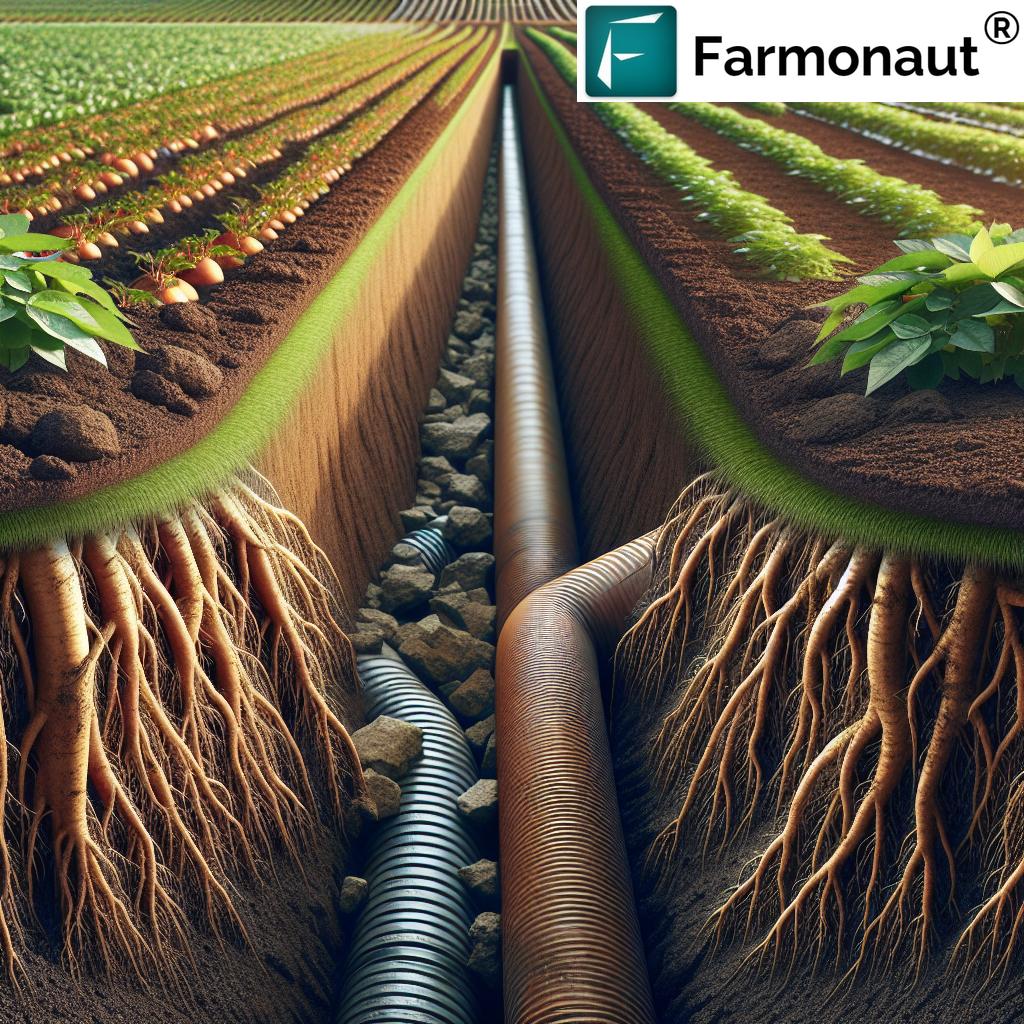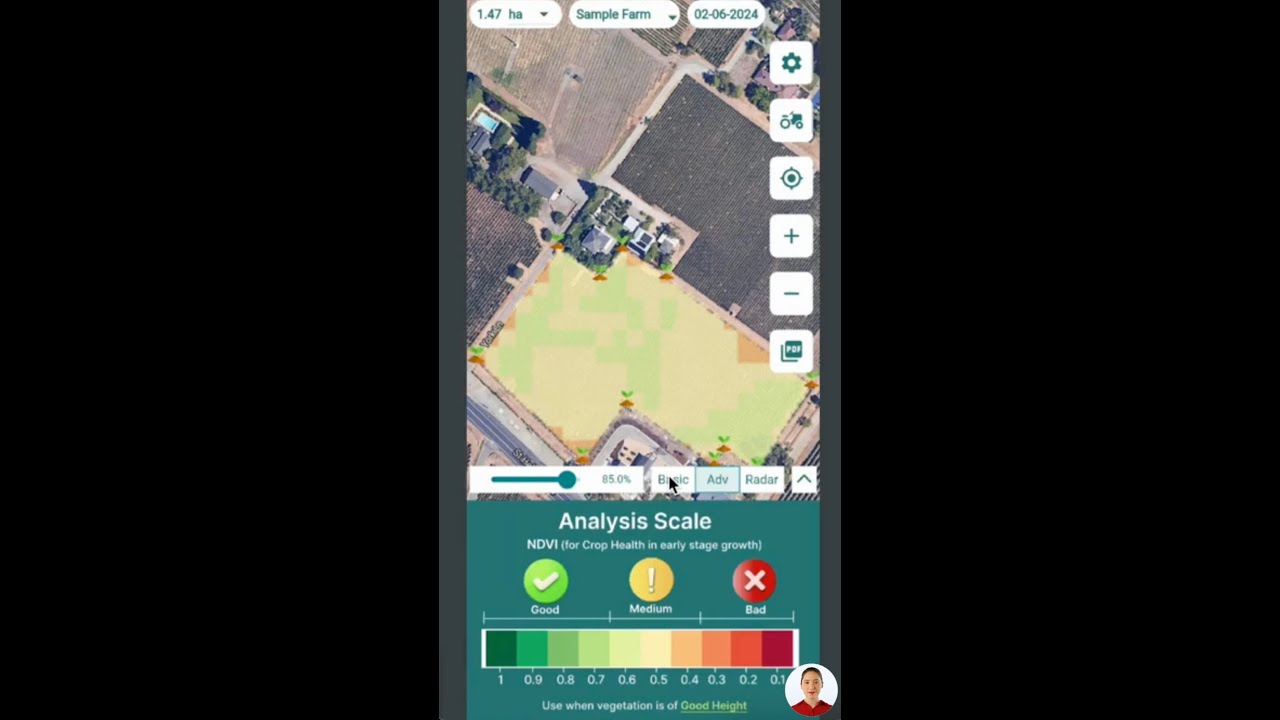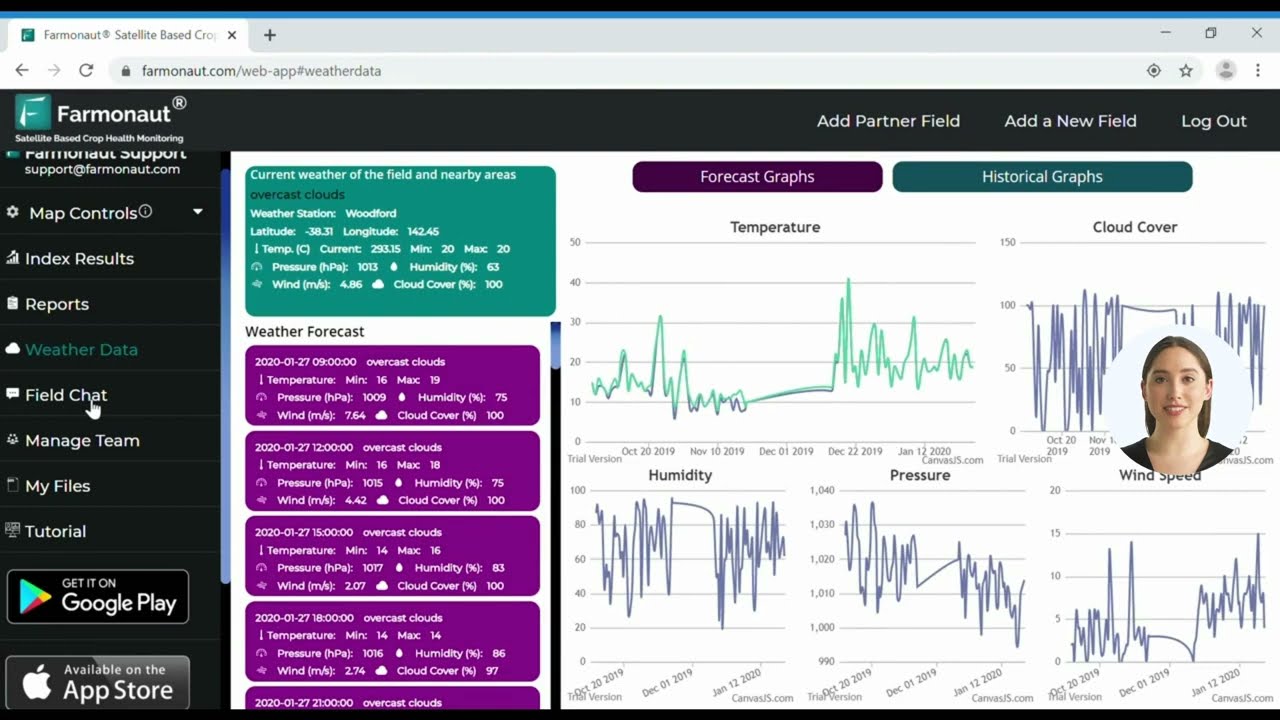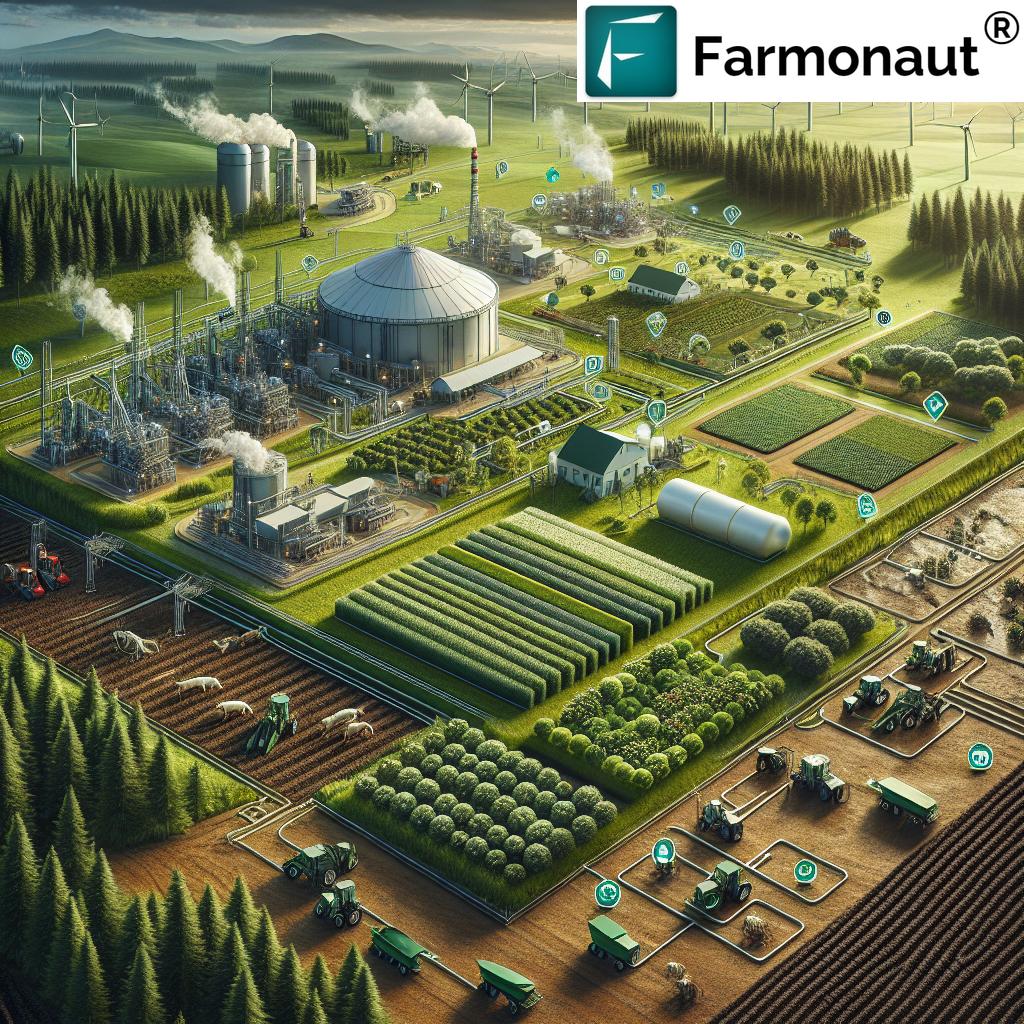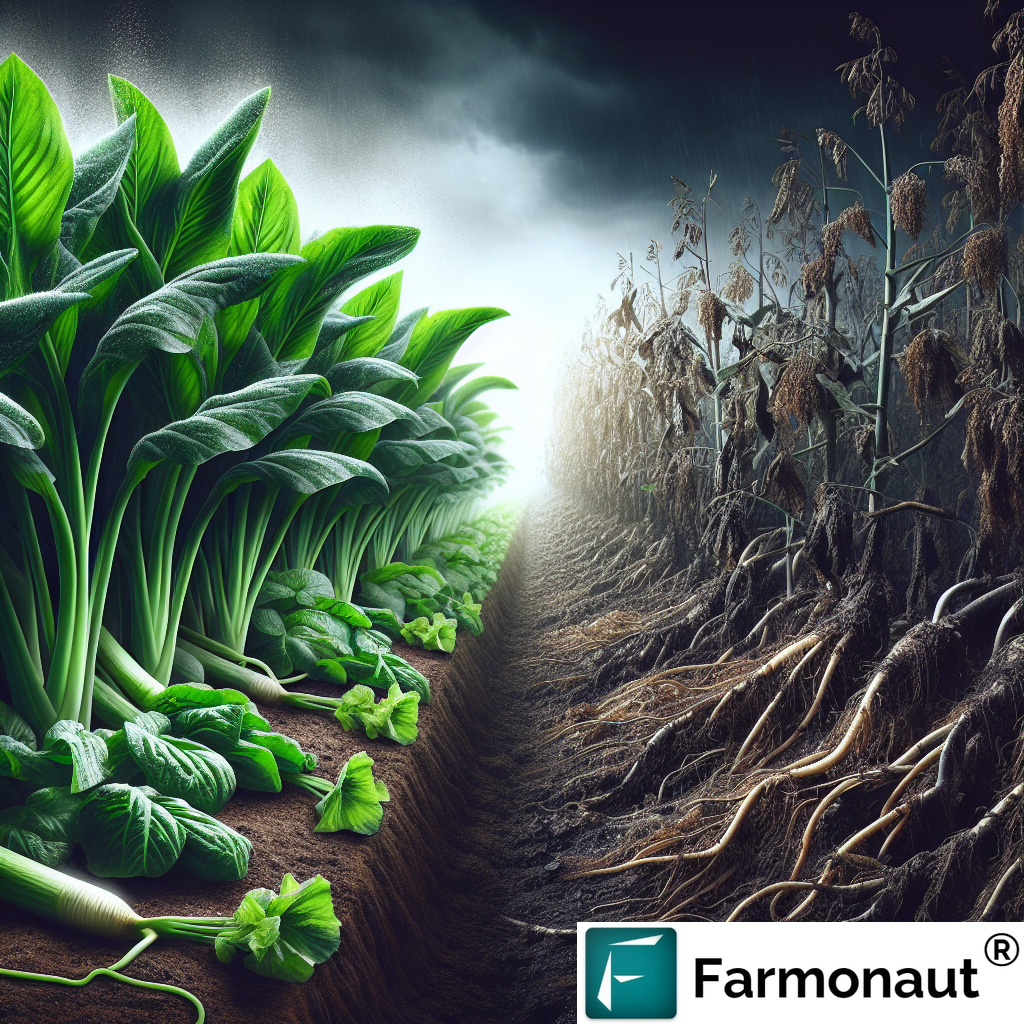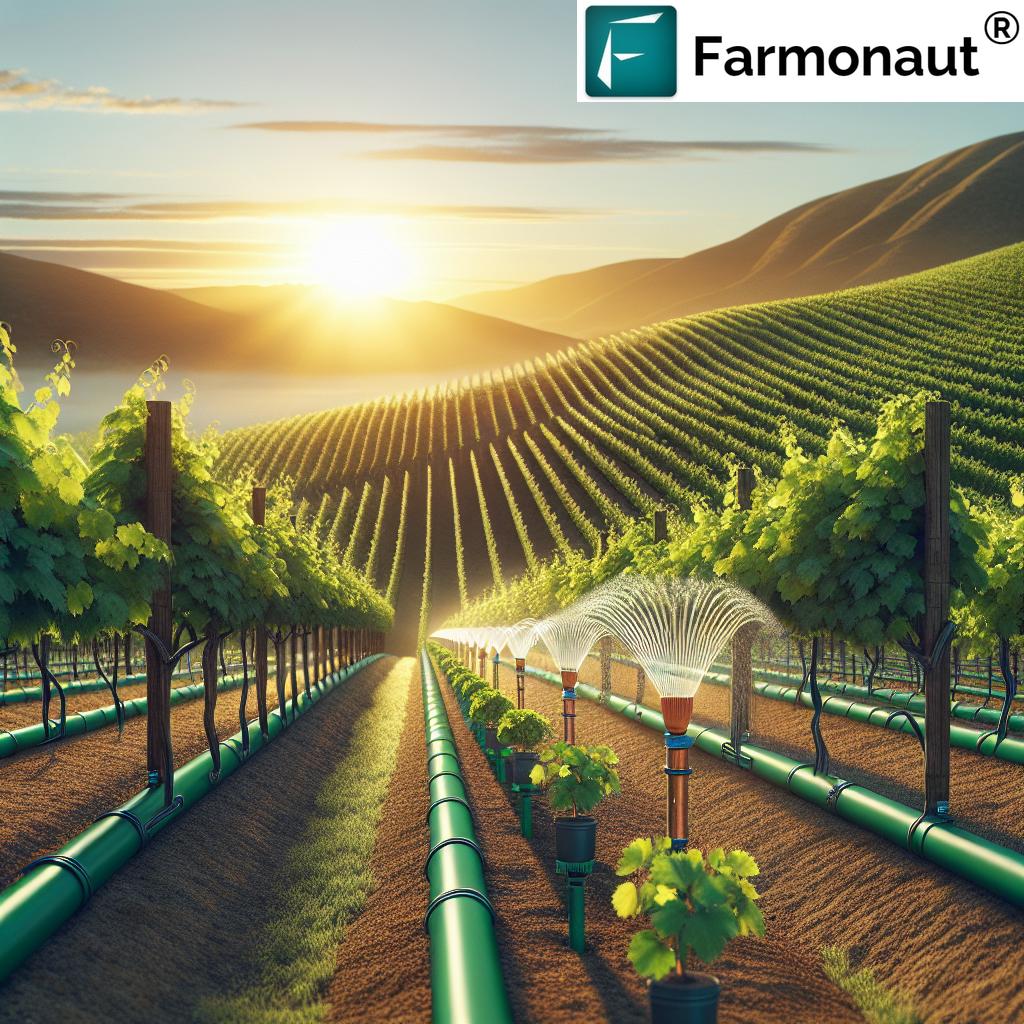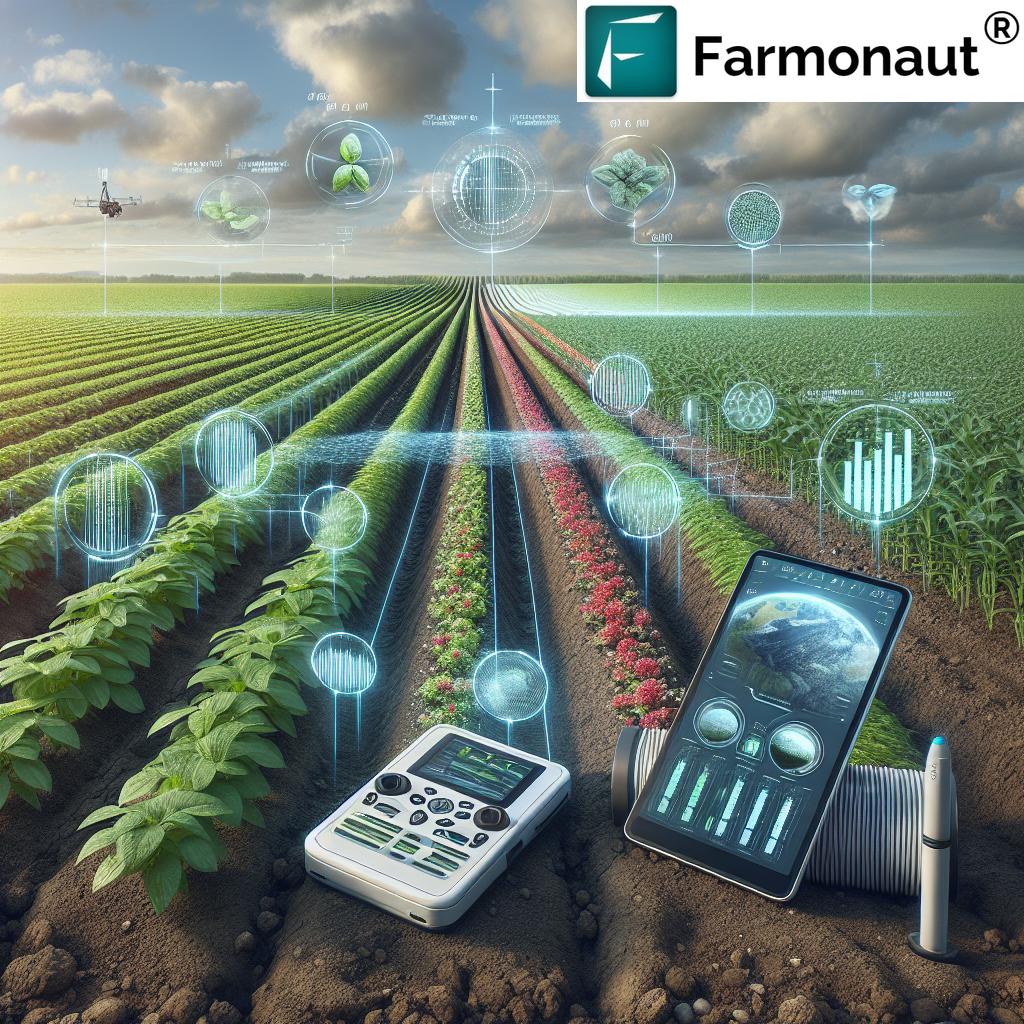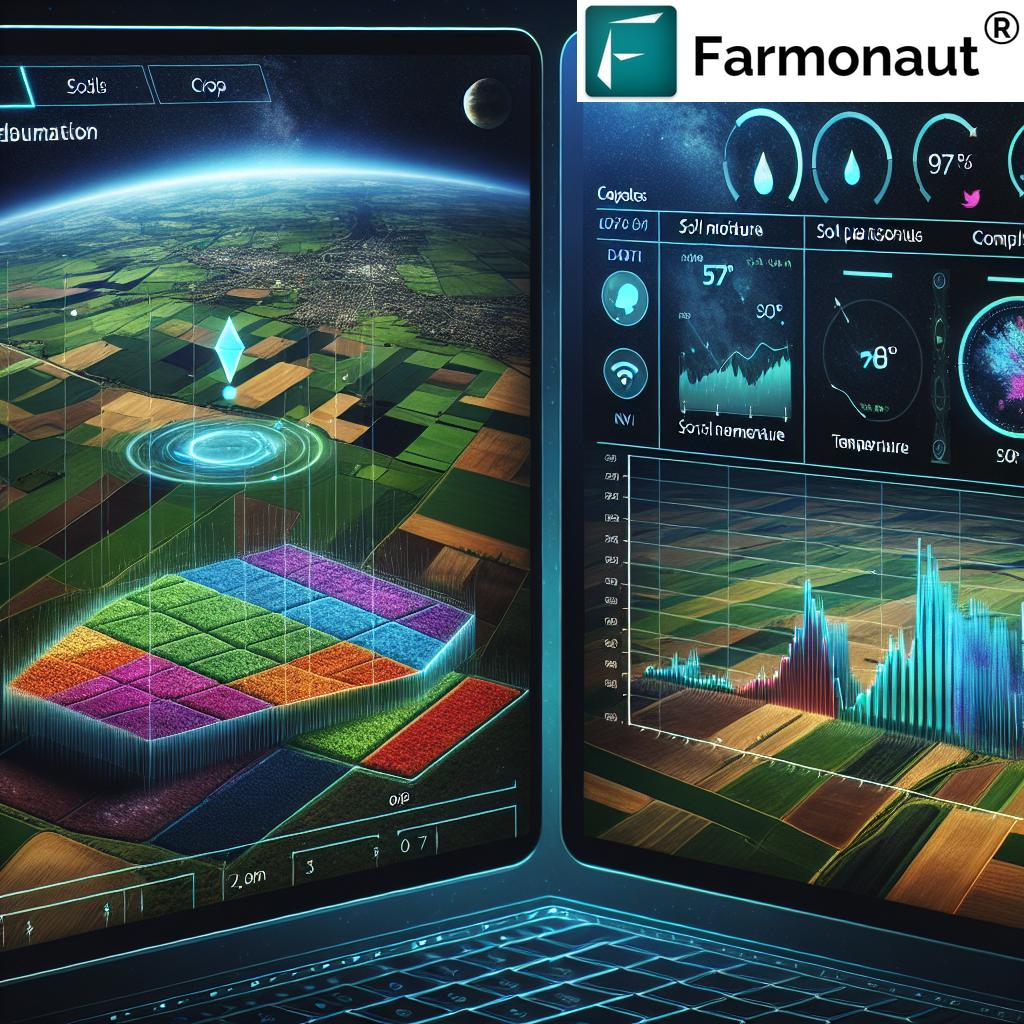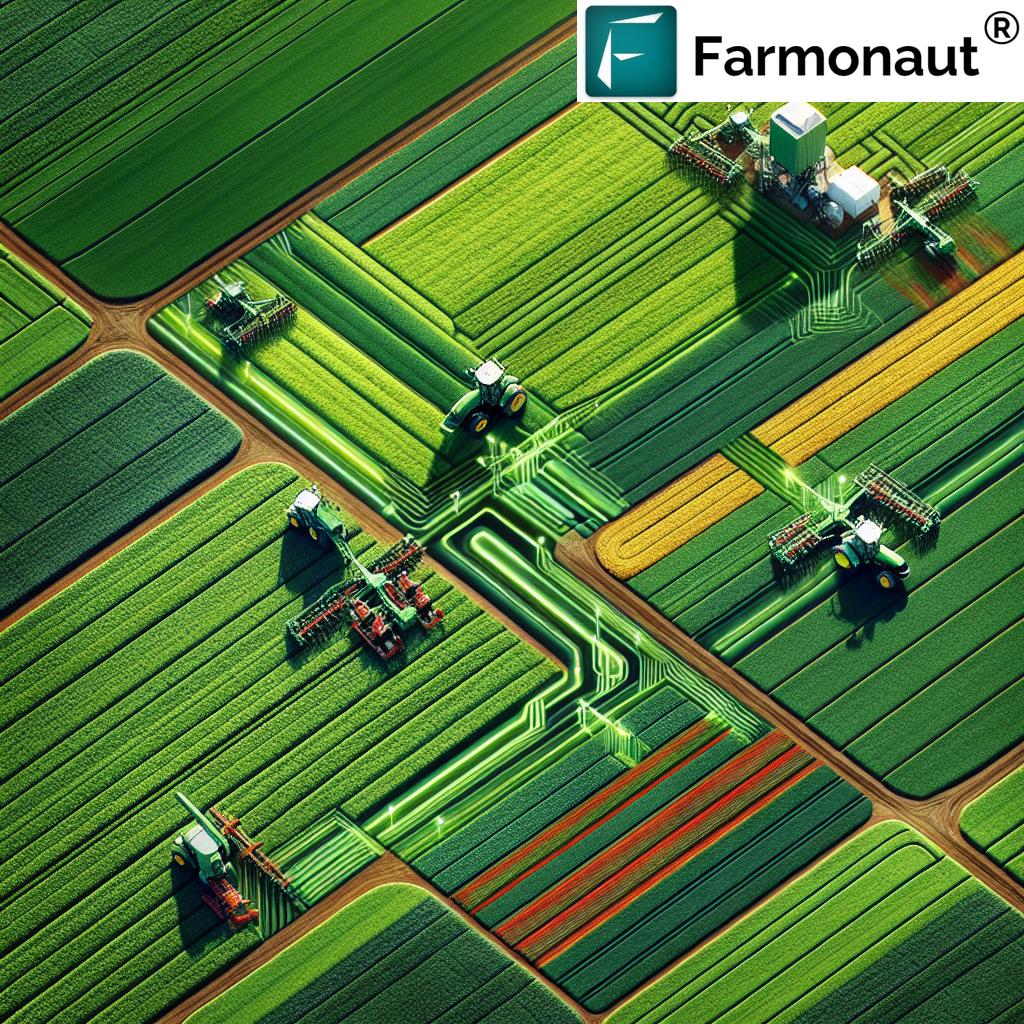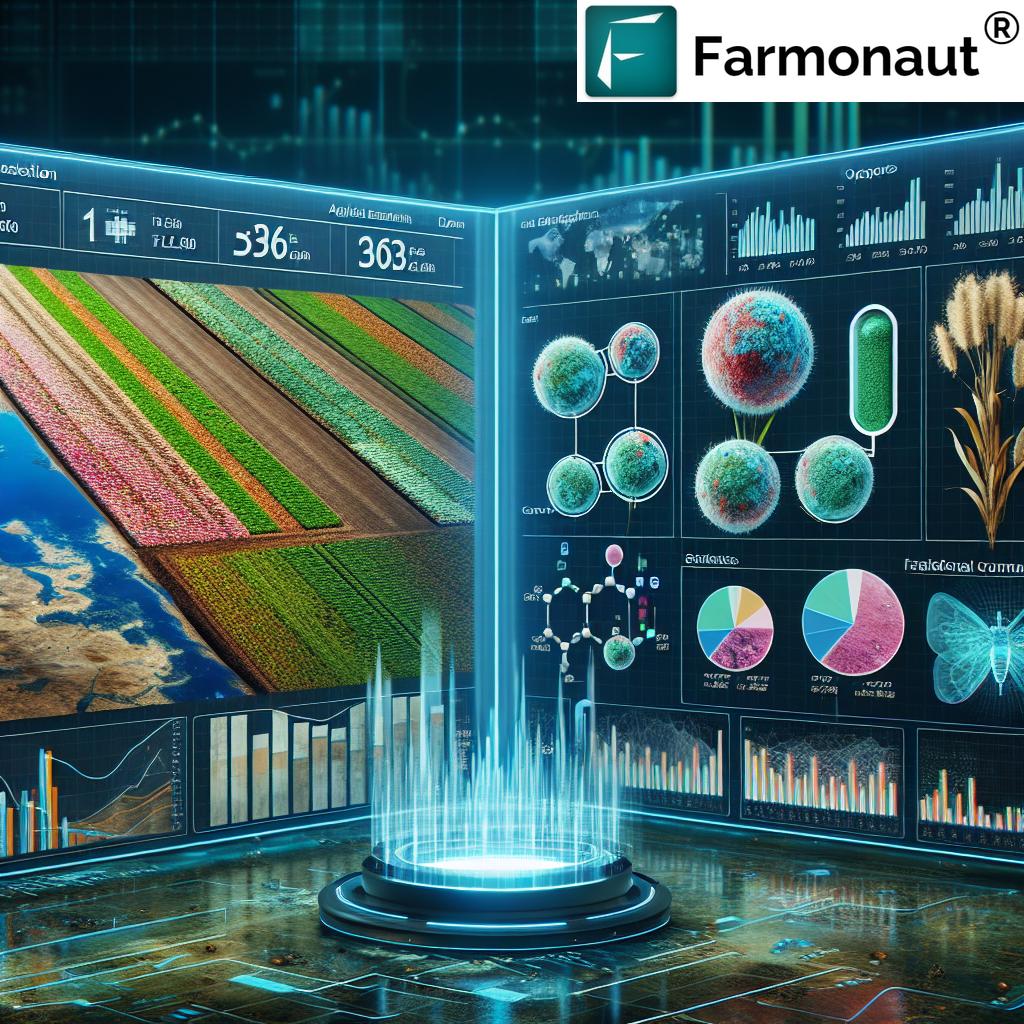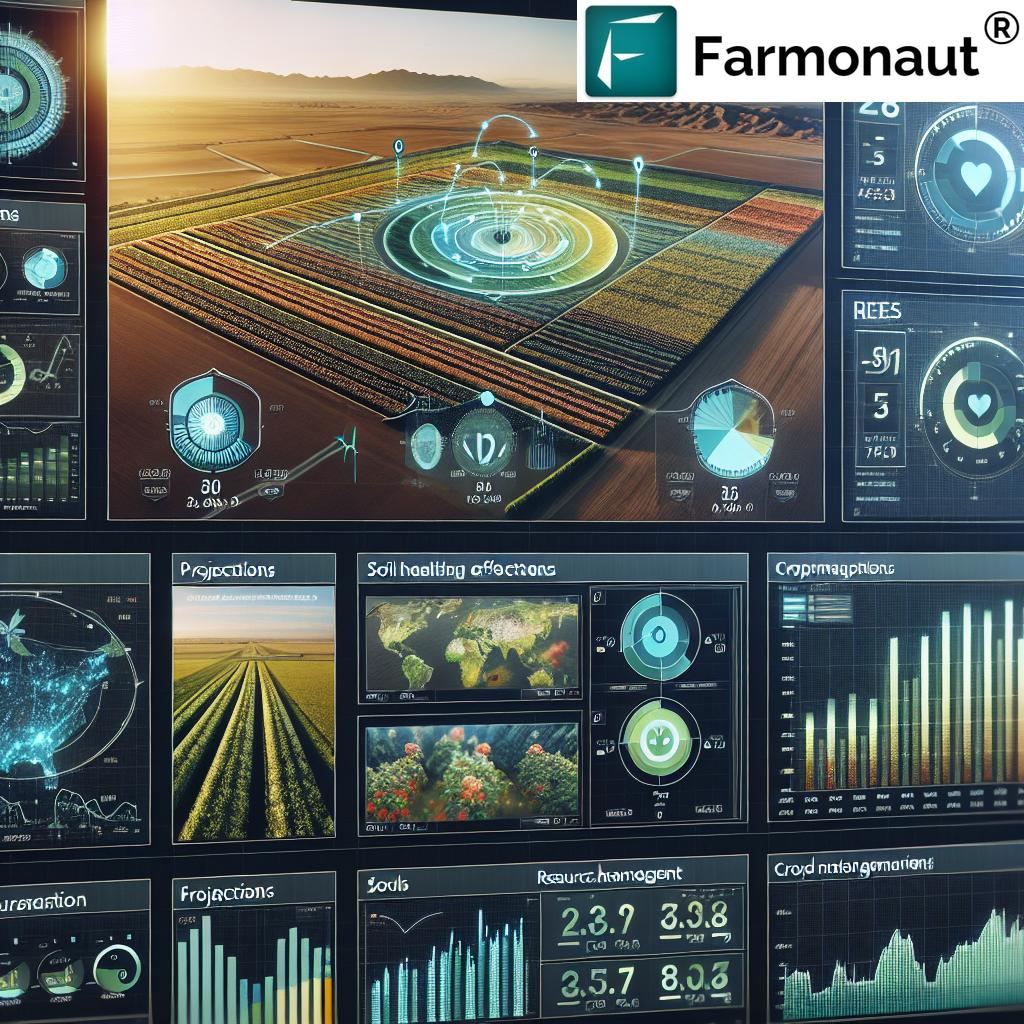Farm Drainage Secrets: Boost Yields Fast!
“Efficient farm drainage can increase crop yields by up to 30% in poorly drained soils.”
“Modern drainage systems can reduce soil erosion by as much as 50%, supporting sustainable agriculture.”
Table of Contents
- Introduction to Farm Drainage Systems
- Benefits of Farm Drainage
- Understanding Surface and Subsurface Drainage
- Advanced Drainage Technologies
- Planning and Implementing Effective Farm Drainage
- Comparison Table: Impact of Different Farm Drainage Systems
- Innovative Farm Management: The Farmonaut Approach
- Drainage for Sustainable Agriculture & Environmental Benefits
- Frequently Asked Questions
- Conclusion: Transforming Agriculture with Effective Drainage
Introduction to Farm Drainage Systems
At Farmonaut, we recognize that farm drainage systems stand at the core of successful, sustainable, and productive agricultural operations. Proper management of excess water is not merely an option—it’s a critical practice that can determine whether crops reach their full potential or succumb to a host of soil health and operational issues. In this comprehensive guide, we’ll unlock the secrets of farm drainage, revealing how advanced technologies and thoughtful management can boost yields fast, improve soil health, and help us all contribute to a more sustainable environment.
Focus Keyword in Context: Farm drainage systems allow us to manage water levels effectively, prevent waterlogging and foster optimal conditions for healthy plant growth, nutrient uptake, and overall crop productivity.
Let’s delve deeper into agricultural drainage, exploring the key types, remarkable benefits, advanced technologies, and how you can implement the best drainage practices to achieve higher yields and sustainability for your land.
Key Benefits of Farm Drainage Systems
Effective drainage is about much more than just preventing waterlogging. There are layered advantages for farmers, the environment, and the operational efficiency of their farming enterprises:
- Boosted Crop Yields Fast: By preventing waterlogging, drainage for crop productivity is maximized, as healthy root development and improved nutrient uptake lead to higher-quality yields.
- Soil Health Improvement: Drainage systems improve soil health by reducing compaction and promoting aeration, supporting beneficial soil organisms and maintaining overall soil structure.
- Operational Efficiency: Timely removal of excess water allows for more reliable planting, cultivation, and harvesting—meaning we can capitalize on the full growing season.
- Environmental Benefits: We reduce soil erosion in fields and minimize harmful nutrient and pesticide runoff into waterways, directly contributing to sustainability and enhancing water quality in our local environments.
Understanding Surface and Subsurface Drainage
To truly master farm drainage, we must begin by understanding the two primary types of systems and how they work to create optimal growing conditions for every crop.
1. Surface Drainage: Directing Water Away from Our Fields
Surface drainage involves the strategic use of ditches, furrows, or engineered channels to remove excess water that would otherwise pool during heavy rainfall. By doing this, we prevent water from remaining on the surface where it can hinder development of plant roots and create conditions ripe for soil compaction.
- Especially valuable in flat topography or areas prone to intense, seasonal rainfall
- Basic yet effective method to manage water levels before they can cause harm
2. Subsurface Drainage: Removing Water from Within the Soil
Subsurface drainage employs buried pipes—known as tile drains—to transport unwanted groundwater out of the root zone. This system is exceptionally beneficial for fields with heavy, poorly drained clay soils or areas where natural drainage is limited.
- Tile drains run beneath the surface, collecting water from poorly draining soils
- Provides a controlled removal of water to maintain optimal soil moisture
Effective Water Management: The Foundation of Productive Farms
Implementing the right drainage system is essential to prevent waterlogging, maintain healthy soil conditions, support crop growth, and foster ongoing productivity.
Advanced Drainage Technologies: Take Control of Crop Yields & Soil Health
Modern agriculture is evolving—and so are drainage systems. New technologies are transforming how we monitor, manage, and optimize drainage solutions for maximum yield and sustainability.
- Controlled Drainage: This advanced technique lets us adjust the water table through custom-built flow controls, holding back or expelling water depending on seasonal rainfall and crop requirements. Perfect for managing water during dry or wet periods.
- Two-Stage Ditches: Unlike basic outlet ditches, two-stage ditches offer benches and wider cross-sections to dissipate energy, reduce erosion, and promote gentle filtration—resulting in cleaner water entering local streams.
- Bioreactors: Woodchip bioreactors installed at field outlets employ bacteria to convert excess nitrates into nitrogen gas, directly reducing nutrient pollution in waterways and preserving environmental quality.
- Remote Sensing & IoT Sensors: By integrating precise monitoring tools, we can track real-time water movement, soil moisture conditions, and system efficiency across all fields—making adjustments proactively.
- Laser-Guided Land Leveling: Precise topography shaping ensures the intended slope, enhancing both surface and subsurface drainage effectiveness.
These advanced drainage technologies help us consistently achieve optimal conditions for crop productivity and improve soil health—while reducing runoff, erosion, and environmental impact.
Discover how our carbon footprinting services at Farmonaut Carbon Footprinting track environmental impact, supporting compliance and sustainability in modern farm management.
Planning and Implementing Effective Farm Drainage Systems
The process of implementing a successful farm drainage system involves more than simply digging ditches or laying pipes. It’s about a strategic evaluation of our fields, soils, water flow, and long-term goals.
1. Assess Soil & Topography
- Understanding soil types (clay, loam, sand) and existing natural drainage patterns is essential for custom system design.
- Survey land contours to map water movement and determine the best placement for ditches or tile drains.
2. Analyze Environmental Impact
- Evaluate risks of increased nutrient leaching, potential effect on nearby waterways, and compliance with local regulations.
- Balance productivity needs with sustainable agriculture goals.
3. Perform a Cost-Benefit Analysis
- Weigh initial costs of technology, installation, and operation against anticipated yield increases and long-term savings from efficiency improvements.
- Remember—operational efficiency can bring substantial, lasting economic rewards!
4. Design & Implement Drainage for Sustainable Agriculture
- Choose the drainage system (surface, subsurface, bioreactor-equipped, etc.) best suited to your farm’s unique needs.
- Integrate monitoring and management technologies whenever possible to keep the system performing optimally.
Explore Farmonaut Crop Plantation & Forest Advisory for actionable insights on optimal resource management throughout the year.
For agribusiness solution developers: Integrate satellite and weather data for precise farm drainage and analytics via the Farmonaut API. Review documentation for seamless platform integration at API Developer Docs.
Optimize logistics and reduce operational costs with Farmonaut Fleet Management, which enables real-time monitoring and management of your agricultural machinery for efficient field operations.
Impact of Different Farm Drainage Systems on Crop Yield and Soil Health
Fight food fraud and elevate brand trust with Farmonaut Blockchain-Based Product Traceability, offering secure, end-to-end transparency for the agricultural supply chain.
Innovative Farm Management: The Farmonaut Approach to Drainage for Crop Productivity & Sustainability
The advent of data-driven farming is transforming how we approach drainage for sustainable agriculture. At Farmonaut, we’re committed to integrating technology and actionable insights into traditional farming practices, giving every farmer—from smallholder to large-scale—the edge they need.
How Farmonaut Supports Smart Farm Drainage Management
- Satellite-Based Crop Health Monitoring: Detect water stress (excess moisture or drought) and soil moisture variability in real time, allowing us to fine-tune drainage interventions and resource allocation instantly.
- AI-Driven Farm Advisory Systems (Jeevn AI): Receive in-field, real-time alerts and data-driven recommendations on drainage, irrigation, and crop management to prevent waterlogging and optimize overall farm productivity.
- Blockchain-Enabled Traceability: Guarantee produce quality and transparency, tracing agricultural products from field to consumer—driven by verified, immutable data.
- Resource/Fleet Management: Track the deployment of machinery and labor for efficient installation, maintenance, and operation of drainage infrastructure, reducing downtime and maximizing operational efficiency.
- Carbon Footprinting: Harness real-time environmental impact tracking to blend productivity with our responsibility for sustainability and compliance.
- API & Platform Accessibility: Access crop monitoring and drainage advisory through the Farmonaut Web and Mobile Apps, and readily integrate our insights into your own agri-management systems using the Farmonaut API.
Farmonaut’s precision agriculture solutions democratize access to world-class satellite imagery, analytics, and AI-powered advisories, empowering farmers globally to improve yields, sustainability, and profitability—without costly on-field sensors or infrastructure.
Streamline access to farm finance with Farmonaut Crop Loan and Insurance Verification — providing satellite-based field verification for seamless crop loans and efficient insurance processing.
Drainage for Sustainable Agriculture & Environmental Benefits of Drainage
Effective use of farm drainage systems is a cornerstone in reducing our environmental impact and fostering resilient agricultural and forestry landscapes.
Environmental Benefits of Drainage in Agriculture and Forestry
- Reduce Soil Erosion in Fields: Professionally planned drainage minimizes the flow and concentration of surface water, dramatically reducing erosion risks.
- Minimize Nutrient and Pesticide Loss: Well-designed drainage controls not only retain soil health but also ensure nutrients and pesticides are more likely to remain in the root zone rather than polluting local streams and rivers.
- Enhanced Field Accessibility: Quicker field drying means less compaction during critical farming operations, extending the usable health of our land and equipment.
- Sustainability Index: The adoption of advanced drainage, coupled with data-driven management by solutions like Farmonaut, greatly increases the sustainability index of our operations.
Key Actions for Farmers:
- Embrace advanced drainage technologies to maximize sustainable outputs.
- Continuously monitor and tweak systems for optimal water management and minimal environmental disruption.
- Plan for the future of climate variability—flexibility in water management is crucial.
To maximize these benefits, leveraging Farmonaut Large-Scale Farm Management Tools can further streamline operations, integrating data across multiple farms and landscapes seamlessly.
Frequently Asked Questions
What is the main purpose of installing farm drainage systems?
The primary purpose is to manage excess water in fields, prevent waterlogging, improve soil health, and boost crop yields, while also supporting long-term sustainability and operational efficiency.
Are both surface and subsurface drainage necessary?
It depends on your land’s topography, soil type, and climate. Many farms benefit from integrating both types to address surface water removal and control water levels below ground.
How do drainage systems improve soil health?
They reduce compaction, promote aeration, and support beneficial soil organisms, all of which contribute to resilient soil structure and higher productivity.
Can drainage boost farm profitability?
Yes. By allowing timely operations, reducing crop loss due to waterlogging, and maximizing nutrient uptake, farmers can see significant economic gains.
What environmental issues are tackled by modern drainage?
Modern drainage systems minimize nutrient and pesticide runoff, reduce soil erosion in fields, preserve water quality, and support biodiversity—all vital for sustainable agriculture.
How does Farmonaut help monitor and manage farm drainage?
Farmonaut combines satellite imagery, AI advisories, and real-time environmental data to alert farmers, optimize drainage, and maximize yields and sustainability.
How much can drainage increase crop yields?
In poorly drained soils, modern systems can boost yields by 10%–30% or more, depending on crop type and field conditions.
Is drainage necessary in all climates?
Not always. Farms in arid or well-draining regions may need little or no additional drainage, while areas with heavy rainfall or clay soils benefit substantially.
How can I get started with data-driven drainage management?
We recommend starting with Farmonaut’s app-based monitoring. Download from:
Farmonaut Web App |
Android |
iOS
Conclusion: Transforming Agriculture with Effective Drainage and Innovation
As we move forward into a world where sustainability, efficiency, and environmental stewardship drive success, mastering farm drainage systems becomes not just a technical requirement, but a strategic imperative for every farm. Whether it’s leveraging surface and subsurface drainage, adopting advanced drainage technologies, or utilizing Farmonaut’s satellite-backed tools, we can create optimal conditions for growth, maximize crop yields fast, and ensure long-term soil health.
Let us continue pushing the boundaries in drainage for sustainable agriculture, utilizing technology and practical understanding for thriving, future-proof agriculture and forestry landscapes. Ready to experience the next generation of farm management?
Unlock the full potential of your fields—integrate innovative farm drainage solutions and let Farmonaut power your journey to yield, efficiency, and sustainability.



